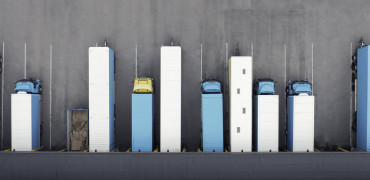For the first time ever, the new Building Regulations include a section that deals with ‘Overheating’ as a standalone issue.
The Regulation covers new dwellings as well as care homes and student accommodation – and it’s an opportunity for engineers to design in health and wellbeing for occupants.
In our often dowdy, cloudy summers it’s difficult to imagine that overheating is a risk in UK homes. Unfortunately, that’s far from the case, especially with temperatures in July hitting record highs of nearly 40C.
The Climate Change Committee (CCC) estimates that by 2050 we could face 4,500 premature deaths each year caused by rising temperatures.
As engineers are well-aware, UK domestic building design has been dominated by heating, but there is no escaping the effects of climate change, and even where overheating is not life-threatening it causes significant discomfort to occupants.
As we all know, it’s difficult to sleep on hot summer evenings. CIBSE’s TM59 notes that a sleeping environment that reaches 26C or more causes disrupted rest, limiting the health benefits of sleep.
Part O points to mechanical ventilation to cut the risk of overheating.
Heat island
The problems of overheating are compounded in cities which suffer higher temperatures, caused by the ‘heat island’ effect.
Part O recognises this geographic influence on indoor comfort. It divides England into ‘moderate’ and ‘high’ risk areas.
London and its suburbs are in the second category, and the Regulation notes that areas of Central Manchester ‘may also have elevated night-time temperatures’.
The new Regulation comes at a time when more high-rise urban apartment-style dwellings are springing up across the UK, putting more occupants in buildings that will feel the unpleasant impacts of our rising temperatures.
Many of these apartments are build-to-rent (BTR) schemes.
Investment in BTR is booming – it reached £4.3 billion in 2021, an increase of 19% on 2020. And most of these apartment blocks are in urban areas.
How Part O will tackle this
However, city-centre high-rise apartment blocks, which are often highly-glazed are also at high risk from overheating.
Part O requires designers to take these issues into account, and to minimise the impacts of overheating with ventilation louvres in external walls, or openable windows that make the most of cross ventilation.
However, city centres can be noisy, and security can also be an issue for those on the lower floors.
What’s more, opening windows will leave occupants exposed to potentially high levels of pollution – creating further health issues from poor indoor air quality.
Part O therefore points to mechanical ventilation as a useful option to cut the risk of overheating.
This is an important opportunity for designers to make use of the latest mechanical ventilation with heat recovery (MVHR) systems. It’s an energy-efficient approach to reducing overheating that also provides other important benefits such as improved indoor air quality.
How we can help
Mitsubishi Electric has recently introduced its residential Lossnay Mechanical Ventilation with Heat Recovery (MVHR) system for homes.
It operates continuously at ultra-low noise levels, so it is an ideal solution for homes and apartments where comfort is key. There is also a built-in automatic summer bypass, to stop heat recovery and to bring in the cooler evening air during the warmer months – further reducing the risk of overheating
Lossnay MVHR also offers optional NOx (nitrogen oxide) and particulate matter filtration in filter pockets on the MVHR itself, so it can be easily maintained.
Both pollutants are particularly harmful to people, so the filtration means that buildings even in the most polluted city-centre environments can benefit from clean, healthy air.
Your role as an M&E contractor
New legislation for buildings often brings with it additional complexities for designers and contractors.
However, Part O is an excellent reason to think about MVHR in homes where it may not otherwise have been considered. It’s a technology that addresses several health issues – overheating, indoor air quality and comfort – while helping to achieve regulatory requirements.
While we strive to meet our Net Zero goals to reduce the dangers of global warming, we must also prepare our buildings for the realities of climate change.
Here in the UK that means hotter summers with more extended heatwaves. With the application of the right technologies, we can ensure that our homes are not only safe, but also comfortable and energy efficient.
If you need further guidance of Part O, or you would like to know more about MVHR from our M&E Contractor team, please feel free to get in touch.
Tom Bowland is M&E Business Development Manager




